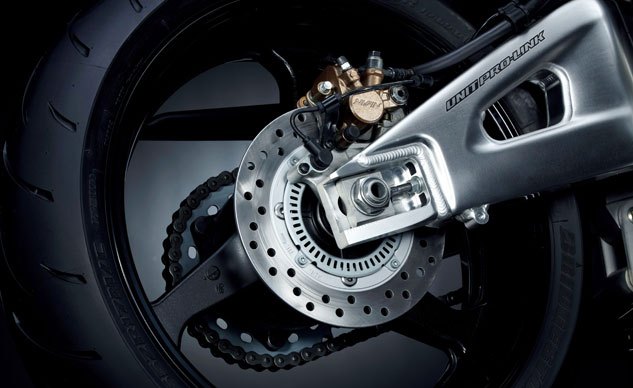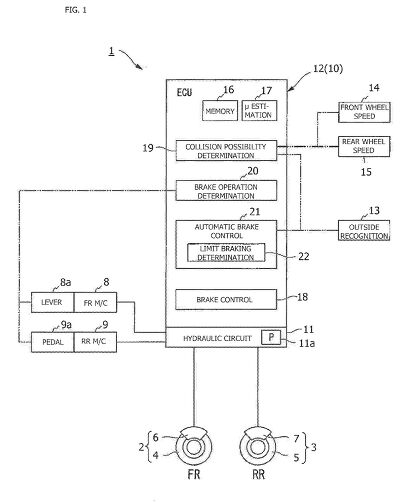Honda Patents Automatic Emergency Braking Technology

New patent applications published by the U.S. Patent and Trademark Office reveal Honda is working on an automatic braking system for motorcycles. The patents describe a system that would apply the brakes when it detects a possible frontal collision, like, say, a car suddenly turning through an intersection.
Honda already has a similar system, called the Collision Mitigation Braking System, on several new 2017 automobiles but the patent applications show Honda is looking at applying the technology to two-wheelers. On cars, CMBS uses a combination of millimeter-wave radar and a camera to determine a potential frontal collision. The patents reveal a similar set-up, but for motorcycles.
If the system determines a potential crash, the CMBS provides the driver with a warning before applying different levels of braking automatically. While the system isn’t designed to prevent all collisions, Honda says it can at the very least give the driver a better chance of taking corrective action. Reducing speed could also help reduce the severity of a crash.
For motorcycles, Honda faces the added challenge of adding automatic emergency braking within certain limits to prevent disrupting the rider, which could pose its own risks.
When a potential collision is sensed, the system checks to see whether the rider has already started applying the brakes. If so, the automatic braking system provides supplemental braking pressure while keeping the same ratio of front and rear braking so it feels more natural to the rider.
If the rider had not applied brakes, the system would first activate the rear brake to prevent nose dive. The system then calculates the friction coefficient of the road surface before determining the appropriate braking limits. If the rear brake reaches its lock limit, the system then apples front brake pressure. The system continues to work until the motorcycle is stopped or the obstacle is no longer a threat.
There’s still a ways to go before this technology makes it to a production motorcycle, if at all. At the very least, we know that Honda is looking into it.

Dennis has been a part of the Motorcycle.com team since 2008, and through his tenure, has developed a firm grasp of industry trends, and a solid sense of what's to come. A bloodhound when it comes to tracking information on new motorcycles, if there's a new model on the horizon, you'll probably hear about it from him first.
More by Dennis Chung





































Comments
Join the conversation
Most commenters have forgotten research shows 75-80% of riders target fixate when confronted with emanate danger. Don't know if this will truely help but,,,,, maybe.
Very worrying that it is thought that automation applying the brakes is going to have a better response than the actions of the rider. Especially with the suggestion it will apply the rear brake first. In the UK we have taught emergency braking as part of our basic to advanced test training syllabuses for many years and it is standard practice across the board to apply the front brake before the back. This is in order to get the weight transferred forward and down on to the front wheel first. We have found that this is by far the best way to avoid the rear wheel locking. A system that second guesses this and applies the opposite is likely to do more harm than good in an emergency situation.